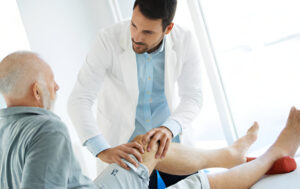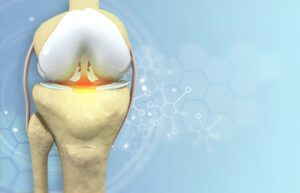Shielding Your Knees How to Prevent Meniscus Injuries in Sports

When it comes to sports, a healthy knee is a game-changer. Athletes of all levels depend on their knees for strength, agility, and speed. But with intense physical activity comes the risk of injury, and meniscus injuries are among the most common. Nearly every athlete, from weekend warriors to professionals, may face the threat of a meniscus tear. This post aims to enlighten athletes, sports enthusiasts, and physical therapists about meniscus injuries and provide practical prevention strategies.
We’ll explore the common causes of meniscus injuries and identify the signs and symptoms. We’ll also share prevention tips to strengthen and protect your knees. We’ll highlight the importance of proper training and footwear and showcase success stories of athletes who have successfully implemented these strategies. Additionally, we’ll discuss the role of early intervention and the invaluable support of physical therapists.
Understanding Meniscus Injuries

The meniscus is a vital component of the knee joint, acting as a cushion between the thigh bone and shinbone. It helps stabilize the knee, absorbs shock, and distributes weight evenly across the joint. However, due to its crucial role, it’s susceptible to injury, especially in athletes who engage in high-impact sports.
Understanding the importance of preventing meniscus injuries is key to maintaining an athlete’s health and performance. Prevention not only helps avoid the pain and discomfort of an injury but also reduces downtime and the risk of future complications. By taking proactive steps to protect their knees, athletes can extend their careers and stay in the game longer.
Common Causes of Meniscus Injuries in Athletes
Meniscus injuries often occur when the knee is subjected to extreme stress or force. Common causes include sudden twists or pivots, direct impact, and overuse. Sports like soccer, basketball, and skiing, which require rapid changes in direction or frequent jumping, pose a higher risk for meniscus tears.
Athletes who fail to warm up properly or have weak muscles around the knee are also at increased risk. The lack of flexibility and strength can leave the knee vulnerable during intense physical activity. It’s essential for athletes to be aware of these risk factors to minimize the chances of injury.
Signs and Symptoms of Meniscus Injuries
Recognizing the signs and symptoms of a meniscus injury is critical for timely intervention. Athletes may experience pain, swelling, and stiffness in the knee. A clicking or popping sensation during movement can also indicate a tear. In severe cases, the knee may lock or give way, causing instability.
Pain and discomfort can vary in intensity, depending on the severity of the tear. Some athletes may be able to continue playing, while others may find it difficult to bear weight on the affected leg. Early detection and treatment are essential to prevent further damage and ensure a successful recovery.
Prevention Strategies Strengthening and Protecting the Knee
Preventing meniscus injuries begins with strengthening and protecting the knee. Athletes should focus on exercises that enhance muscle strength, flexibility, and balance. Incorporating activities like squats, lunges, and leg presses into their routine can help develop the quadriceps, hamstrings, and calf muscles.
Stretching before and after workouts is crucial to maintaining flexibility and preventing injury. Dynamic stretches, such as leg swings and walking lunges, can improve range of motion and prepare the body for physical activity. Balance exercises, like single-leg stands and stability ball exercises, can enhance knee stability.
The Role of Proper Training and Footwear in Preventing Meniscus Injuries
Proper training and footwear play a significant role in preventing meniscus injuries. Athletes should work with coaches and trainers to develop a well-structured training program that focuses on technique and form. Learning the correct way to land from a jump or change direction can reduce stress on the knee joint.
Choosing the right footwear is equally important. Shoes should provide adequate support, cushioning, and traction to protect the knees during sports activities. Athletes should consider factors like sport-specific requirements, foot type, and playing surface when selecting their footwear.
Real-life Examples and Success Stories of Athletes Implementing Prevention Strategies
Many athletes have successfully implemented prevention strategies to protect their knees and reduce the risk of meniscus injuries. Professional basketball player Stephen Curry, for example, credits his rigorous conditioning program and focus on proprioception for keeping his knees healthy and minimizing injuries.
Similarly, Olympic skier Lindsey Vonn has emphasized the importance of strength training and proper footwear in her routine. By incorporating specific exercises and wearing the right gear, she has managed to maintain her knee health and achieve success on the slopes.
These success stories demonstrate the effectiveness of targeted prevention strategies and the positive impact they can have on an athlete’s performance and longevity.
Importance of Early Intervention and the Role of Physical Therapists
Early intervention is crucial in managing meniscus injuries and preventing further damage. Athletes should seek medical attention at the first sign of a knee injury to ensure a prompt and accurate diagnosis. Physical therapists play a vital role in the recovery process, helping athletes regain strength, flexibility, and function.
Through personalized rehabilitation programs, physical therapists can guide athletes in their recovery and provide valuable advice on injury prevention. They can help identify any underlying issues, such as muscle imbalances or improper movement patterns, and recommend exercises to address these concerns.
Timely intervention and professional support can significantly improve an athlete’s chances of a full recovery and return to the sport they love.
Empowering Athletes to Protect and Strengthen their Knees
By understanding the causes and symptoms of meniscus injuries and implementing effective prevention strategies, athletes can take charge of their knee health and reduce the risk of injury. Strengthening exercises, proper training, and appropriate footwear are essential components of a comprehensive prevention plan.
Athletes should also prioritize early intervention and seek the guidance of physical therapists to address any concerns and optimize their recovery. By taking these proactive steps, athletes can empower themselves to maintain their performance and enjoy a long, healthy sports career.
References and Additional Resources for Further Reading
For those interested in learning more about meniscus injuries and prevention strategies, consider exploring the following resources:
- The American Academy of Orthopaedic Surgeons (AAOS) offers detailed information on meniscus injuries and treatment options.
- The National Institute of Arthritis and Musculoskeletal and Skin Diseases (NIAMS) provides insights into knee health and injury prevention.
- “The Knee Injury Bible” by Robert G. Marx is a comprehensive guide on knee health and rehabilitation.
By staying informed and incorporating these strategies into their training regimen, athletes can protect their knees and continue to excel in their chosen sports.

